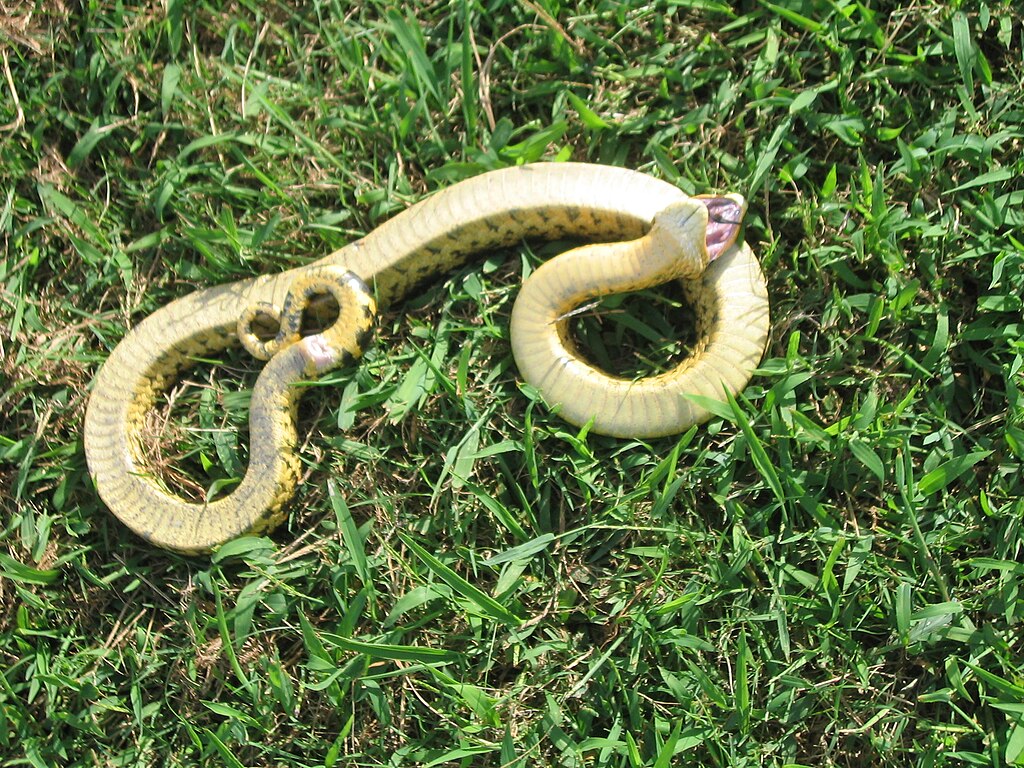In the fascinating world of reptiles, mimicry serves as one of nature’s most ingenious survival strategies. Among these master impersonators is a remarkable snake that has evolved to mimic the appearance and behavior of the deadly cobra, despite having no close relation to true cobras at all. The hognose snake, with its impressive defensive displays and cobra-like hooding, presents one of the most intriguing cases of Batesian mimicry in the reptile kingdom. This phenomenon, where a harmless species evolves to resemble a dangerous one, provides the hognose with protection from predators who have learned to avoid cobra-like appearances. Join us as we explore the captivating world of this cobra impersonator, uncovering the remarkable adaptations and behaviors that make it one of nature’s most accomplished actors.
The Master of Disguise: Introducing the Hognose Snake

The hognose snake (genus Heterodon) comprises several species native to North America, with the Eastern, Western, and Southern varieties being the most well-known examples of these remarkable reptiles. Named for their distinctive upturned snouts that resemble a pig’s nose, these snakes have developed an extraordinary set of defensive behaviors that allow them to mimic venomous cobras when threatened. Despite their sometimes intimidating display, hognose snakes are relatively harmless to humans, possessing only mild venom delivered through rear fangs primarily used for subduing amphibian prey. Their dramatic defensive performances have earned them colorful nicknames including “puff adder,” “spreading adder,” and “blow snake,” all referencing their cobra-like impersonation skills that have fascinated herpetologists and nature enthusiasts alike.
Evolutionary Brilliance: The Science of Batesian Mimicry

The hognose snake’s cobra mimicry represents a textbook example of Batesian mimicry, a phenomenon first described by English naturalist Henry Walter Bates in the 19th century. This evolutionary adaptation occurs when a harmless species evolves to resemble a dangerous or toxic species, thereby gaining protection from predators who have learned to avoid the harmful model. While true cobras aren’t native to North America where hognose snakes live, the adaptation likely evolved because predators have an innate fear of certain threatening displays, particularly the flattened neck and raised head posture associated with venomous snakes worldwide. The effectiveness of this mimicry lies not just in physical resemblance but in behavioral patterns that trigger instinctive avoidance responses in potential predators. Remarkably, this parallel evolution has occurred despite the significant genetic distance between hognose snakes and true cobras of the Elapidae family, demonstrating how similar environmental pressures can produce comparable adaptive solutions in unrelated species.
The Dramatic Performance: Hooding Like a Cobra
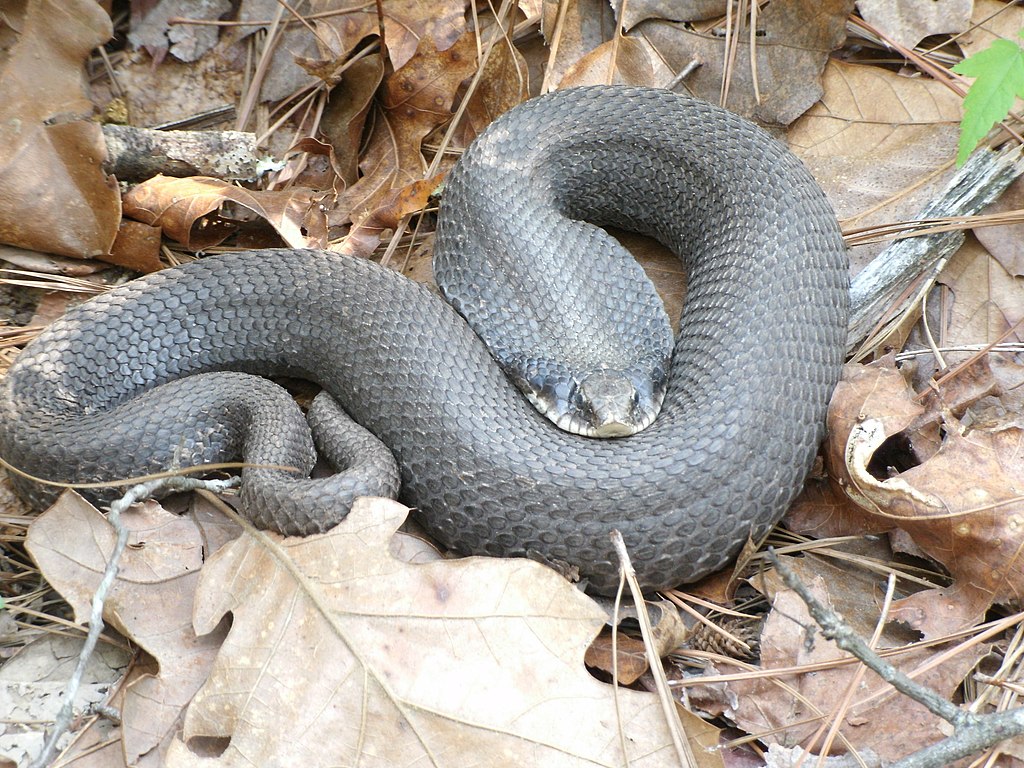
When threatened, the hognose snake puts on a performance worthy of theatrical acclaim by flattening its neck and raising its head in a remarkably cobra-like display. Unlike the true cobra, which has specialized elongated ribs in its neck that form a literal hood, the hognose achieves its imitation by spreading its regular ribs and inflating its body with air, creating the visual illusion of a cobra’s hood. This impressive display is enhanced when the snake raises the front portion of its body off the ground, hisses loudly, and makes mock strikes toward the perceived threat. The transformation is so convincing that even experienced naturalists have been momentarily fooled by the display, especially when viewing the snake from a distance or in poor lighting conditions. What makes this behavior particularly fascinating is that it represents convergent evolution, where a North American colubrid snake independently developed a defensive strategy that mimics elapid snakes from entirely different continents.
Hissing and Striking: The Auditory Deception

The hognose snake’s cobra impersonation extends beyond visual mimicry to include impressive auditory elements that enhance its threatening façade. When disturbed, these snakes produce a loud, forceful hissing sound by expelling air through their breathing passages, creating an intimidating noise that serves as an auditory warning to potential predators. This hissing is often accompanied by aggressive-looking forward lunges or strikes with a closed mouth, movements designed to scare away threats without actually making contact. The snake’s commitment to this performance is remarkable, as it will repeatedly strike toward the perceived danger while maintaining its flattened neck posture and elevated body position. Interestingly, hognose snakes rarely bite during these displays, preferring to rely on the effectiveness of their bluffing strategy rather than physical confrontation, which further demonstrates that this behavior is purely defensive rather than predatory.
The Death-Feigning Finale: When Mimicry Fails
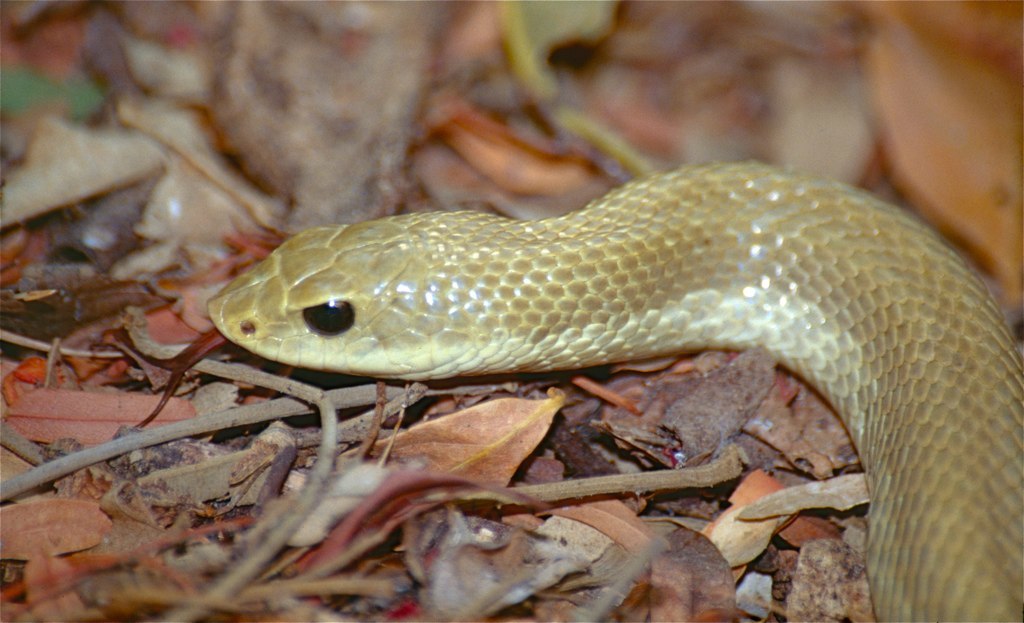
If the cobra impersonation fails to deter a persistent predator, the hognose snake resorts to one of the most dramatic behaviors in the reptile world – playing dead. This behavior, known scientifically as thanatosis, involves the snake rolling onto its back, opening its mouth, extending its tongue, and sometimes even releasing a foul-smelling musk while producing small amounts of blood from its mouth or cloaca. The performance is so committed that the snake will go completely limp, and if turned right-side up, will immediately flip over onto its back again, seemingly insistent on maintaining the illusion of death. This elaborate death-feigning behavior works because many predators are programmed to avoid dead or decomposing prey, which might harbor harmful bacteria or parasites. The sequence from cobra mimicry to death-feigning represents a fascinating two-stage defensive strategy that has evolved to address different types of predator responses, showcasing the remarkable behavioral adaptations these snakes have developed for survival.
Physical Distinctions: How to Tell a Hognose from a Real Cobra

Despite their impressive mimicry, several key physical characteristics distinguish hognose snakes from true cobras for the observant eye. The most obvious difference is the upturned, shovel-shaped snout that gives the hognose its name, an adaptation used for digging and burrowing that is completely absent in cobras. Hognose snakes also have stockier, shorter bodies compared to the more slender, elongated build of true cobras, and they lack the distinctive hood markings (like the spectacle pattern of the Indian cobra) that adorn many cobra species. Their pupil shape offers another telltale sign: hognose snakes have round pupils like many non-venomous colubrids, whereas true cobras have round or slightly vertically elliptical pupils. Furthermore, the scale patterns differ significantly, with hognose snakes displaying keeled scales (with a ridge down the center) that give them a somewhat rough appearance compared to the smoother scales of many cobra species.
Geographical Mismatch: Where Hognose Snakes Really Live
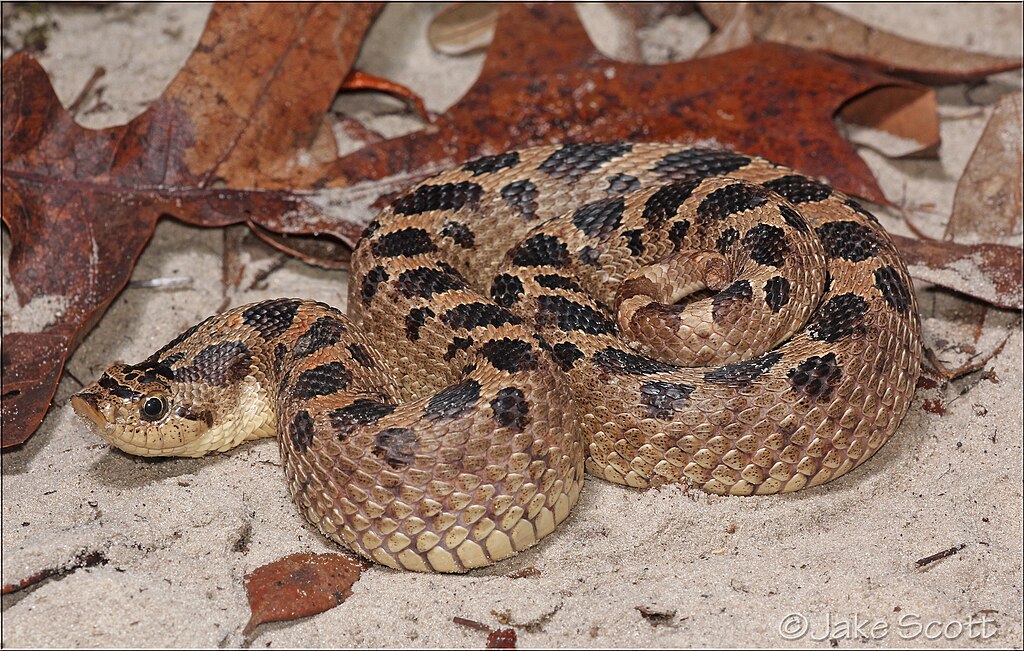
One of the most fascinating aspects of the hognose snake’s cobra mimicry is that it occurs in North America, where no true cobras naturally exist. Eastern hognose snakes (Heterodon platirhinos) range from southern Canada to Florida and west to Texas and Minnesota, inhabiting a variety of environments from sandy coastal areas to woodlands and prairies. Western hognose snakes (Heterodon nasicus) occupy the central United States from southern Canada to northern Mexico, preferring arid grasslands and semi-desert regions with sandy or gravelly soils. Southern hognose snakes (Heterodon simus) have a more restricted distribution in the southeastern United States, particularly in the coastal plains from North Carolina to Florida. This geographical separation from true cobras, which are native to Africa, Asia, and parts of the Middle East, makes the evolution of the hognose’s cobra-like display even more remarkable, suggesting it evolved not to mimic cobras specifically but to trigger an innate fear response in predators toward snakes that display threatening postures.
Venom Reality: Are Hognose Snakes Dangerous?

Despite their intimidating cobra-like displays, hognose snakes pose virtually no threat to humans, possessing only mildly toxic saliva rather than potent venom. Unlike true cobras, which are front-fanged with highly toxic venom delivered through hollow fangs at the front of the mouth, hognose snakes are rear-fanged, with small enlarged teeth at the back of their mouth connected to Duvernoy’s glands that produce a mild venom. This venom is primarily adapted for subduing amphibian prey, particularly toads, which form a significant part of their diet in the wild. When a hognose snake bites a human (an extremely rare occurrence since they strongly prefer their bluffing displays over actual biting), the results are typically minor localized swelling, irritation, or in some cases, an allergic reaction rather than significant envenomation. The reluctance to bite, combined with their rear-fanged dentition that makes venom delivery to humans difficult, means that hognose snakes are generally considered harmless and are popular among reptile enthusiasts as relatively safe pet snakes.
Diet and Hunting Behavior: Nothing Like a Cobra

While the hognose snake’s defensive behavior mimics that of cobras, its feeding habits and hunting techniques couldn’t be more different from these legendary predators. Hognose snakes are specialized feeders with a particular fondness for toads, having evolved immunity to the bufotoxins that make these amphibians poisonous to many other predators. Their upturned snout serves as a specialized tool for rooting toads out of soil or leaf litter, and their rear fangs help them to control these often difficult-to-swallow prey items. In contrast, true cobras are generalist predators that primarily hunt small mammals, birds, lizards, and other snakes, using their potent venom to quickly subdue prey before consuming it. The hognose snake’s feeding behavior involves actively searching for and digging up prey rather than the ambush tactics employed by many cobras, representing a fundamental difference in ecological niche despite the superficial behavioral similarities in defensive displays.
Species Variations: Different Hognose Snakes, Different Performances
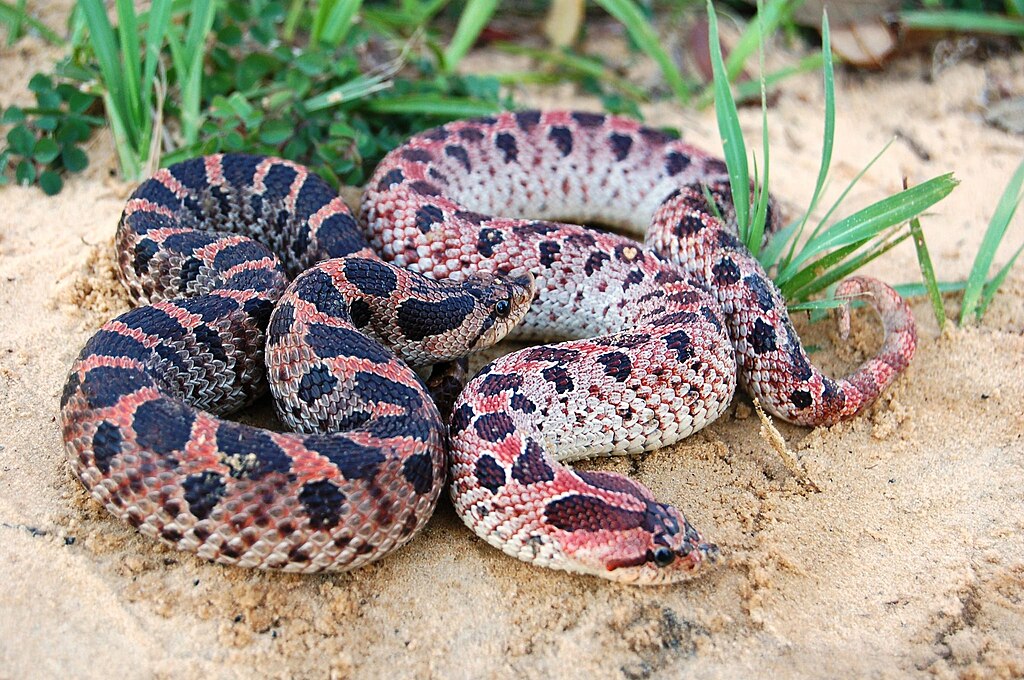
The intensity and style of the cobra mimicry performance vary noticeably among the different hognose snake species, with some being more theatrical than others. Eastern hognose snakes (Heterodon platirhinos) are generally considered the most dramatic performers, with the most elaborate flattening of the neck and head, the loudest hissing, and the most convincing death-feigning behavior when their initial displays fail to deter threats. Western hognose snakes (Heterodon nasicus) also perform the cobra-like display and death-feigning routine, though typically with less intensity than their eastern counterparts, sometimes preferring to flee if given the opportunity. Southern hognose snakes (Heterodon simus), the smallest of the North American species, tend to be more secretive and may resort to playing dead more quickly than performing extended cobra-like displays. These behavioral differences likely reflect variations in predator pressures across their respective ranges, with each species having fine-tuned its defensive repertoire to address the specific threats most commonly encountered in its habitat.
Conservation Status: Threats to These Remarkable Mimics
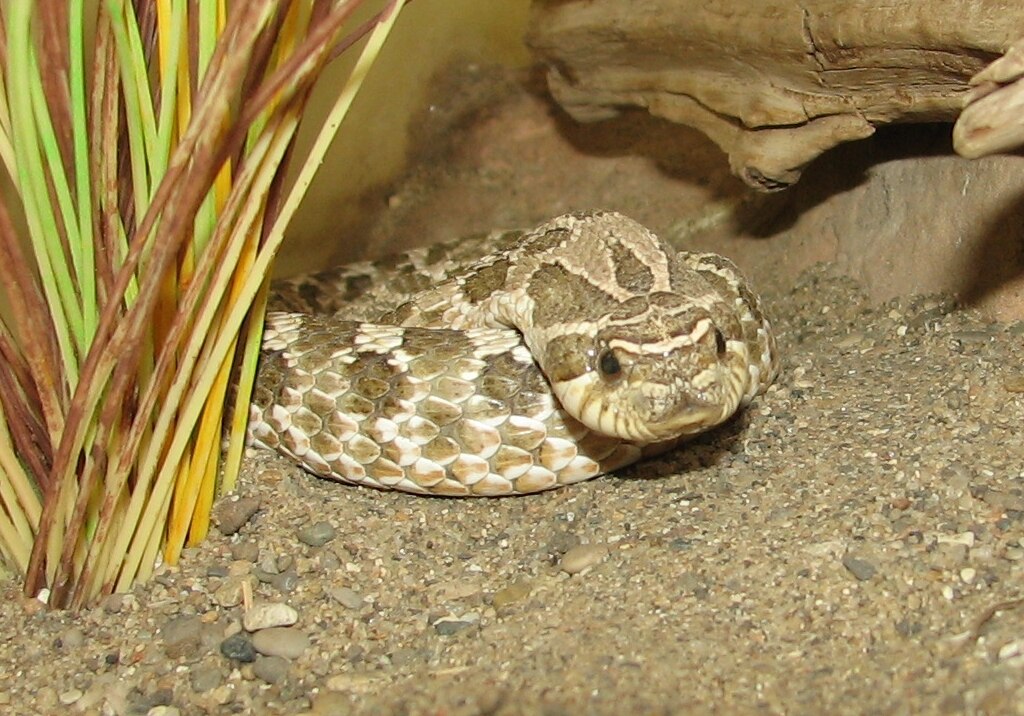
Despite their impressive defensive adaptations, hognose snakes face numerous conservation challenges across their range, with some species experiencing significant population declines. The Southern hognose snake is particularly vulnerable, listed as threatened or endangered in several states due to habitat loss from coastal development, agricultural expansion, and urbanization affecting their preferred sandy habitats. Eastern and Western hognose populations, while generally more stable, still face threats from road mortality, persecution due to misidentification as venomous snakes, and habitat fragmentation. Climate change presents an additional challenge, potentially affecting the distribution and abundance of their amphibian prey base, particularly toads. Conservation efforts include habitat protection, public education about the harmless nature of these snakes despite their intimidating displays, and in some cases, specific management plans to maintain or restore the open, sandy habitats that many hognose species prefer for foraging, nesting, and hibernation.
Cultural Impact: Myths and Misconceptions
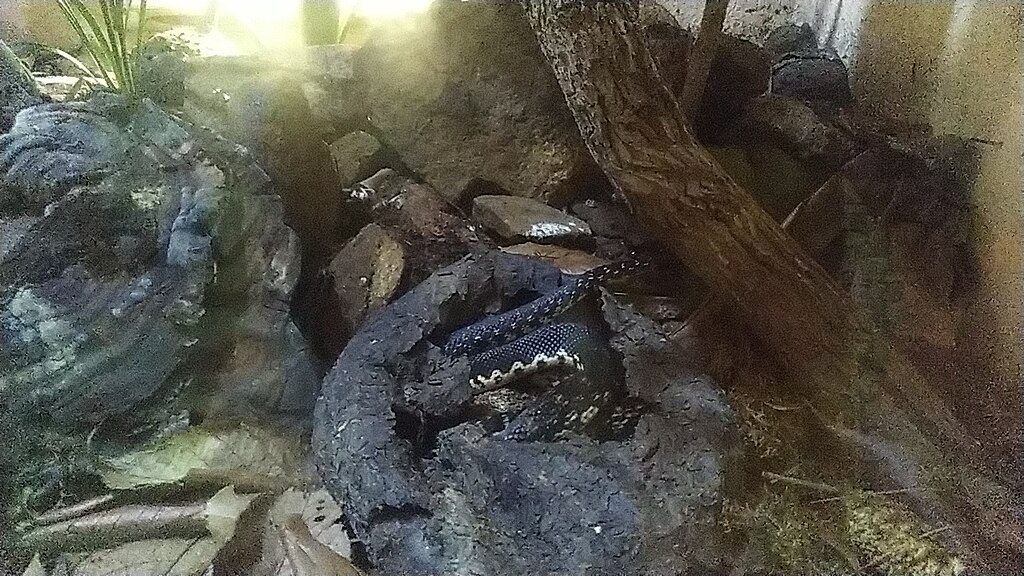
The hognose snake’s dramatic defensive behaviors have spawned numerous myths and misconceptions throughout human history, particularly in North American folklore where they’ve been misunderstood and feared despite their harmless nature. Their cobra-like displays have earned them fearsome nicknames like “puff adder” or “spreading adder,” creating confusion with the genuinely dangerous African puff adder and perpetuating unwarranted fear. In some rural communities, hognose snakes were historically believed to be able to spit venom or poison humans with their breath due to their forceful hissing displays, myths that persist in some areas despite having no basis in reality. The death-feigning behavior has generated its own set of folkloric beliefs, with some traditions holding that these snakes can actually resurrect themselves after death, leading to names like “resurrection snake” in certain locales. These cultural misunderstandings, while fascinating from an anthropological perspective, have unfortunately contributed to the needless killing of these beneficial predators that help control rodent and toad populations in many ecosystems.
Hognose Snakes as Pets: The Captive Cobra Impersonator
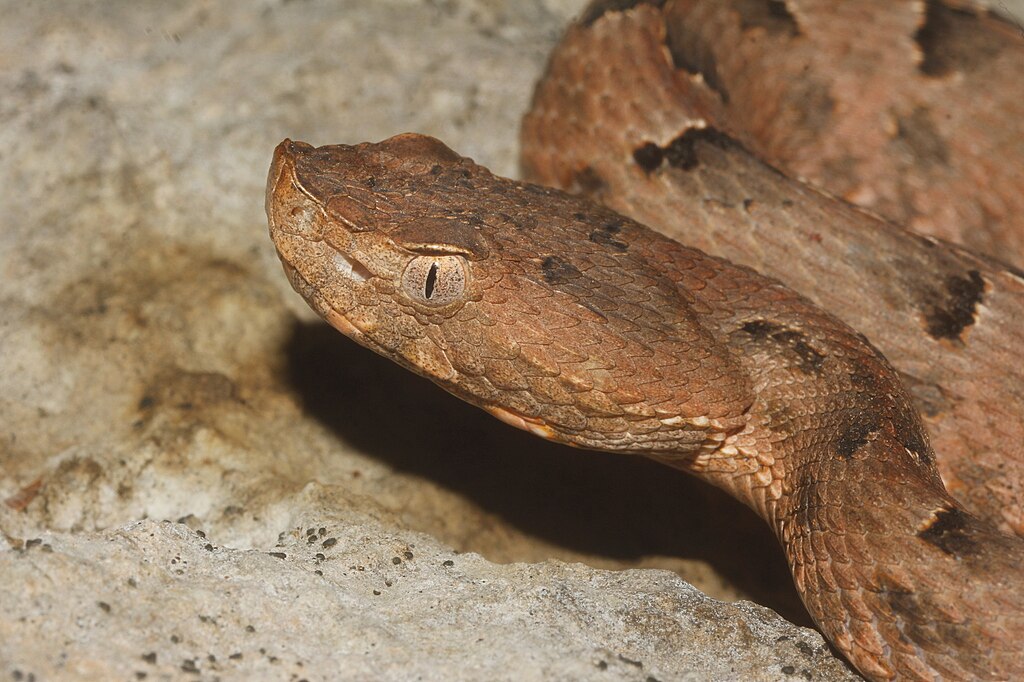
The fascinating defensive behaviors and relatively docile nature of hognose snakes have made them increasingly popular in the reptile hobby, where enthusiasts can safely observe their remarkable cobra impersonations. Western hognose snakes, in particular, have become common in captivity due to their manageable size (typically 2-3 feet), relatively simple care requirements, and availability in numerous captive-bred color morphs ranging from normal patterns to albinos, axanthics, and hypomelanistic varieties. While captive hognose snakes often retain their defensive displays, regular handling typically results in these behaviors becoming less pronounced over time as the snake becomes accustomed to human interaction. Their specialized diet presents perhaps the biggest challenge for keepers, as many hognose snakes initially refuse rodent prey items, though captive-bred individuals are increasingly pre-adapted to accept mice rather than their natural amphibian prey. Ethical considerations around keeping these mimics in captivity include obtaining only captive-bred specimens rather than wild-caught individuals, and providing appropriate enclosures that allow them to express natural behaviors such as burrowing.
In the remarkable story of the hognose snake, we find a testament to the ingenuity of natural selection. These harmless serpents have evolved one of the most convincing disguises in the animal kingdom, mimicking dangerous cobras despite having no evolutionary relationship to them. Their elaborate defensive repertoire—from the dramatic hood-flaring and aggressive strikes to the theatrical death-feigning—represents a masterclass in survival adaptation. While these performances may fool predators and occasionally humans, understanding the truth behind this impressive masquerade helps us appreciate these unique reptiles for what they truly are: harmless, beneficial members of our ecosystems that deserve protection rather than persecution. The hognose snake reminds us that in nature, appearances can be deceiving, and sometimes the most threatening display is nothing more than an elaborate bluff from a master actor of the reptile world.

